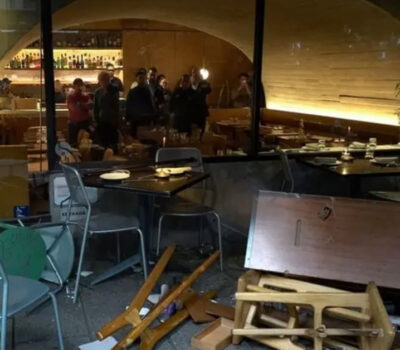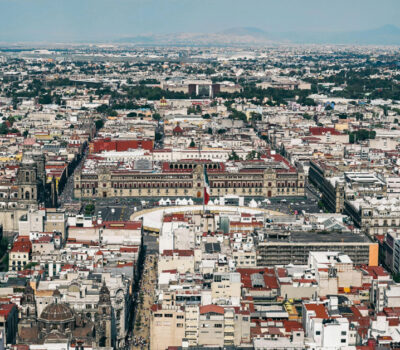Drug smugglers are turning “trusted travelers” into unwitting mules by placing containers with powerful magnets under their cars in Mexico and then recovering the illegal cargo far from the view of border authorities in the United States.
One motorist spotted the containers while pumping gas after crossing into Southern California on Jan. 12 and thought it might be a bomb.
His call to police prompted an emergency response at the Chevron station, and then a shocker: 13.2 pounds of heroin were pulled from under the vehicle, according to a U.S. law enforcement official. San Diego police said the drugs were packed inside six magnetized cylinders.
The driver had just used a “trusted traveler” lane at the San Ysidro border crossing, said the official, who spoke on condition of anonymity because some details of the case have not been made public.
Authorities have learned of at least three similar incidents in San Diego since then, all involving drivers enrolled in the enormously popular SENTRI program, which stands for Secure Electronic Network for Travelers Rapid Inspection. There were 12.6 million SENTRI vehicle crossings in fiscal 2013, more than double the 5.9 million four years earlier.
The program enables hundreds of thousands of people who pass extensive background checks to whiz past inspectors with less scrutiny. Signing up can reduce rush-hour wait times from more than two hours to less than 15 minutes at San Diego’s San Ysidro port of entry, the nation’s busiest crossing, where SENTRI users represented 40 percent of the 4.5 million vehicle crossings in fiscal 2013, the Government Accountability Office found.
But like other prescreening programs, there’s a potential downside: the traveler can become a target, and such cases can be tricky for investigators when people caught with drugs claim they were planted.
Using magnets under cars isn’t new, but this string of cases is unusual.
The main targets are people who park for hours in Mexico before returning to the U.S., authorities say. Smugglers track their movements on both sides of the border, figuring out their travel patterns and where they park. It takes only seconds to attach and remove the magnetized containers when no one is looking.
“It’s a concern for everyone, not as big a concern for me because I’m careful,” said Aldo Vereo, a SENTRI user and office assistant at the San Diego County Health and Human Services Agency who parks in a garage when home in Tijuana and varies his routes. “People should be worried because they go straight home and straight to work.”
“Trusted travelers” were issued windshield decals for years, but they are no longer needed to identify vehicles approaching the inspection booths. New stickers haven’t been issued since 2013, and the U.S. Customs and Border Protection agency says existing stickers can be removed.
Many haven’t heeded the call, which can make them a target. The Otay Mesa Chamber of Commerce in San Diego told newsletter readers last week that decals should go.
“It’s basically demonstrating that you are a SENTRI user,” said Alejandra Mier y Teran, the chamber’s executive director. “Criminals are savvy, and they know they are part of a program where they are not checked as much.”
CBP says frequent crossers also should vary their travel routines and keep a closer eye on their cars.
There have been 29 cases of motorists unwittingly carrying drugs under their cars in the San Diego area since U.S. Immigration and Customs Enforcement identified the trend in July 2011, including six drivers who made it past inspectors, said spokeswoman Lauren Mack.
Any driver who suspects something’s amiss under their car should immediately report it, to better show their innocence, authorities say.
Officer Matthew Tortorella, a San Diego police spokesman, said “it would be inappropriate” to make public more details about the Jan. 12 seizure, and CBP spokeswoman Jacqueline Wasiluk also declined to comment, calling it a local police investigation.
There have been three seizures since, all involving SENTRI drivers who were not charged:
—On Jan. 13, inspectors at the Otay Mesa border crossing found 35 pounds of marijuana in seven packages attached by powerful magnets to the bottom of a 2010 Kia Forte.
—On Tuesday, a driver alerted an inspector at Otay Mesa to a package under a 2010 Nissan Murano, and 8 pounds of methamphetamine were found in three packages underneath.
—On Wednesday, a dog at San Ysidro alerted inspectors to a 2000 Toyota Corolla with 18 pounds of marijuana underneath. That driver was enrolled in SENTRI but using a regular lane.
Pete Flores, CBP’s San Diego field office director, acknowledged that it’s unusual to have so many cases in fewer than two weeks.
“It’s a cat-and-mouse game,” Flores said. “Each change they make prompts a change from law enforcement, which in turn prompts them to again change their tactics.”
Drug smugglers are turning "trusted travelers" into unwitting mules by placing containers with powerful magnets under their cars in Mexico and then recovering the illegal . . .











